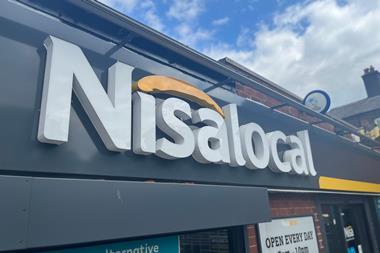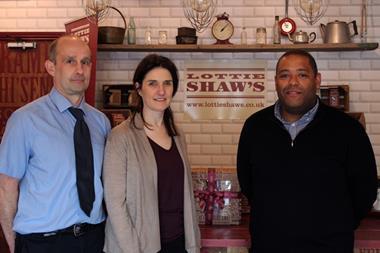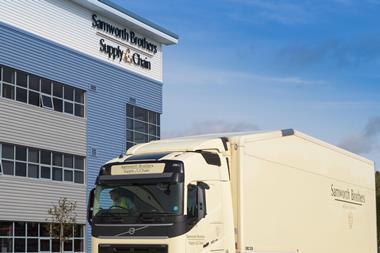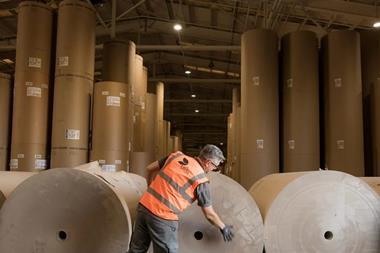The consultation is underway, but leading players already accept the undeniable logic of Today’s Group splitting from Nisa, as Beth Phillips reports
There are some great double acts in grocery. Marks wouldn’t be the same without Spencer, and Procter would be unimaginable without Gamble.
But the logic of Nisa-Today’s 24-year partnership appears to have passed its sell-by date, as last week Today’s launched a consultation to consider demerging from Nisa.
The consultation, it said in the official statement of its plans, was because the marketplace in which both Nisa and Today’s operates, had “changed radically” since Today’s was formed in 1987, and the companies “may be best served and achieved by becoming separate, standalone organisations with focused management and member directors.”
So what would a demerger mean for both parties? For a start, it would make the structure of Nisa-Today’s far less complicated. As the second page of The Little Book of Today’s Brand, put together to promote Today’s Group, says, ‘What is Today’s all about?’
The complexities have grown because the two companies were formed at different times to protect the interests of two different sets of customers. The then National Independent Supermarkets Association was formed in 1977 as a buying group to help independent retailers compete against the growing buying power of the major multiples.
A decade later, Nisa launched Today’s Group to give independent wholesalers similar buying leverage. In today’s terms, the combined £6.9bn clout makes it a bigger buyer than Waitrose, for example. But in recent years they have moved further away from the interests of the other.
Instead of simply buying on more favourable terms, Nisa, which has 950 members operating more than 3,500 stores, is a retailer in its own right. It now has its own flourishing symbol fascia comprising 790 stores. Today’s Group, meanwhile, has 228 members operating 255 depots. It is also developing its own symbol fascia.
Nisa-Today’s CEO Neil Turton admits Nisa-Today’s focus on Today’s Group in board meetings is sometimes “not as much as it might be”, even though Today’s accumulated turnover of £5.4bn is considerably larger than Nisa’s £1.5bn. At £5.4bn, it’s actually bigger than P&H, the UK’s largest grocery wholesaler, by some margin.
Today’s Group has a 33% representation on Nisa-Today’s group board, with just five wholesale members out of 15. And invariably the meetings are dominated by the affairs of Nisa, meaning that the wholesale members are often left with just an hour of a very long meeting to address their concerns and pose their questions.
It’s not helped that there have been a number of “inter-Nisa” wranglings over the years, particularly concerning its largest retail member, Costcutter issues that have little bearing on the wholesale members and have arguably left them in the shadow. Going it alone, therefore, would give Today’s greater clarity and focus.
Probably the biggest change for the two companies would be moving out of Nisa-Today’s Scunthorpe HQ. For despite working together for so long, they are already fairly autonomous. Currently about 26 of Nisa-Today’s 280 employees are solely working on the Today’s business, with crossover in HR, PR, IT and finance.
Suppliers tend to negotiate separate terms with Nisa and Today’s. Nisa also has a huge distribution network, through which it services its retail members, but Today’s doesn’t need it because its wholesale members have their own.
According to John Sharpe, Nisa-Today’s MD for central distribution, trading and logistics, Today’s accounts for just 3% of volumes through central distribution its Scunthorpe depot mainly from smaller wholesale members who use Nisa because they can’t get as good a deal on certain brands. And Today’s MD Bill Laird also predicts there would be more “commercial opportunities” available to both Nisa and Today’s as partners rather than as a single organisation.
It would also be “business as usual” for Nisa’s symbol fascia, believes Nisa-Today’s group symbol director John Heagney. He claims that, although on the face of it it might look like Nisa-Today’s has two symbol fascias competing against each other, they have two completely different offers.
Nisa stores are owned by Nisa retailers who order their stock and have it delivered through Nisa. Today’s stores are owned by independent retailers who get their stock from their wholesaler a Today’s Group member. The stores also tend to be smaller than Nisa stores and the investment on fitting out the store is usually lower, he adds.
The industry agrees that a demerger would be the right option for the company. “It was something that we talked about many times over the years and all agreed that it would be better for the wholesalers to be separate,” says one senior wholesale source. “From a supplier perspective, they would prefer a distinction.”
Colin Graves, chairman of Costcutter, says: “It is an understandable move. However, it will be a sad day if and when they split considering the partnership they have developed.”
Adds another Nisa retailer: “I have always been very keen on the wholesalers staying as part of Nisa-Today’s and would be sad to see the wholesalers go, but I understand the rationale behind the consultation. This is not bad news. Both groups are doing exceptionally well and would have the opportunity to be even more focused operating separately.”
First indications from Today’s members are also positive. About 70 members met at Nisa-Today’s annual exhibition last week and, says Laird, the proposal “went down well”. Regional meetings will now take place so every member gets their say.
Demergers also have a track record of success in wholesale. In August 2002 the Group Trading Alliance (GTA) a multimillion-pound buying group that negotiated overrider terms from major suppliers for Spar and Landmark Wholesale was disbanded after 17 years. Just like Nisa and Today’s, at the time Spar and Landmark said the split was because their needs were changing. Since then terms have been negotiated separately without any major upheaval.
The outcome of the consultation is expected in the summer and, if agreed, Today’s would become a standalone company in January 2012. It would be going it alone in a rapidly consolidating wholesale market. Although wholesale experts predict some Today’s members could become targets of acquisition-hungry Bestway C&C, they believe its biggest competition will continue to be from rival buying group Landmark Wholesale. Both have been fighting for new members over the past year.
In February, Today’s signed former Landmark member Elbrook C&C. In turn, this week Landmark captured Today’s member Country Range Group. But as one wholesaler neatly puts it, just like the GTA, a demerger at Nisa was bound to happen one day.
“The question isn’t why are they splitting, more like what took them so long?”
The sum or the parts
Nisa
Members: 950
Stores: 3,500
Turnover: £1.5bn
Biggest member: Costcutter
Today’s
Members: 228
Depots: 255
Turnover: £5.4bn
Biggest member: Dhamecha C&C













No comments yet